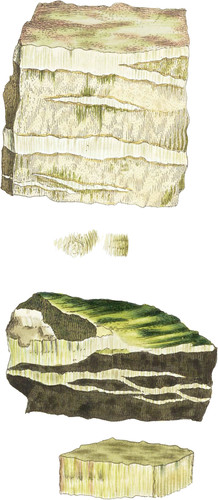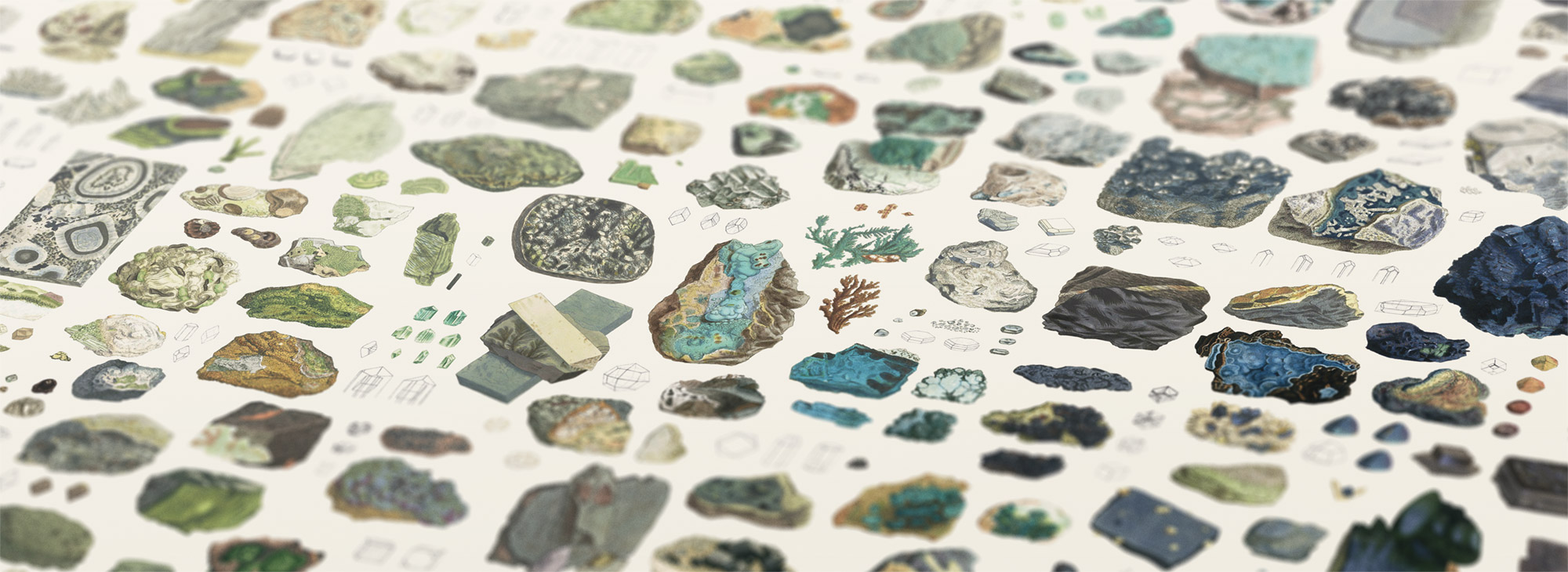 Enlarge
Enlarge
British Mineralogy
Silky Amianthus, or Asbestus
- Class 2. Earths.
- Order 1. Homogeneous.
- Gen. 4. Silex.
- Spec. Magnesiatus.
- Div. 2. Imitative.
- Spec. Char. Silex in combination with Magnesia.
- Syn.
- Amianth. Kirw. v. 1. 161. Emmerl. 1. 402. Jameson, 1. 442. Wern.
- Asbestus maturus, Amaianthus. Waller, 1. 408. 410.
- Asbeste. Haüy, 3. 245.
This beautiful substance is found chiefly in the Island of Anglesea, North Wales; and at Portsoy, in Serpentine rocks, as they are mostly called. It is generally found in the fissures and cracks, passing like a sort of crystallization from the sides to the centre in infinitely small spiculæ, being sometimes quite indurated, though retaining nearly the same appearance as that which may be easily separated by the nail. The upper figure is from Portsoy, and is included in a somewhat woody Asbestos of a light colour. The lower figure came from Wales in a dirtyish Serpentine, and is partly covered with the green Serpentine, nearly approaching the Nephrite or Axestone from the Molucca Islands, of which the natives make their hatchets.
Amianthus, or Asbestos, as it has been more commonly called, was formerly used for preserving the ashes of deceased persons, by being woven into a cloth to wrap them up in while burning*, and by being incombustible it retained those ashes most conveniently. Scotland and Wales have a satiny variety which runs in veins among Serpentines, and sometimes a kind of Steatite. it varies in colour, but is most frequently white, satiny, and so much resembling silk that there can be no better comparison. It separates into silky filaments, of equal flexibility and fineness with the most attenuated thread, insomuch that they appear to divide beyond our power of examination. They seem solid, as do the filaments of all stones of this nature.
- * In weaving it they use other threads to assist; but those afterwards burn away, leaving a perfect amianthine cloth; a fine specimen of which was lately preserved at Rome. Se Dr. Smith’s Tour, v. 2. 201.

